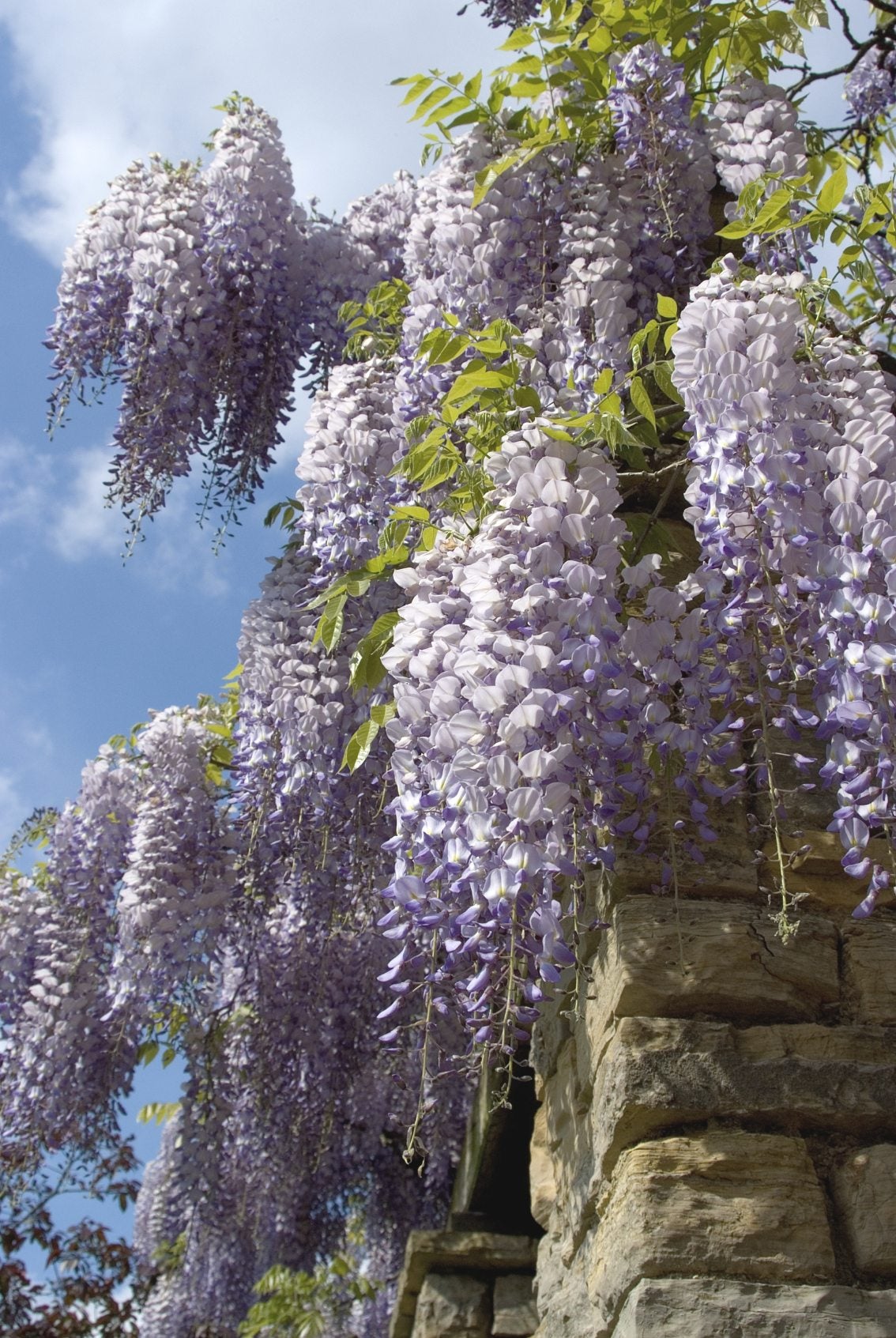Growing Wisteria - Proper Wisteria Vine Care


There's no mistaking the sweet fragrance of wisteria as it perfumes the garden-- it's beautiful, violet-blue or lavender blooms cover this vine in mid to late spring. While growing wisteria is easy, you should take caution with it, as it can quickly overtake everything without proper care.
Growing Wisteria & Wisteria Vine Care
The most important factor to consider when growing wisteria is location. Wisteria is a twining vine that requires sturdy support and regular pruning to keep it under control. Open areas surrounded by lawns that can be easily mowed are ideal for growing wisteria.
Wisteria doesn't fare well in cold so make sure it receives plenty of sunlight. This vine requires deep, rich soil that is somewhat moist but will tolerate many soil conditions. Once planted, pruning is about the only important requirement for wisteria vine care. Since this vine is an aggressive grower, there's no need for fertilizing and being drought tolerant, wisteria requires little watering.
Training Wisteria Vines & When to Prune Wisteria
While wisteria is great for covering an arbor or pergola, training wisteria vines makes it easier to control. Keep in mind, however, when training wisteria vines the variety may exhibit different twining characteristics. For example, Chinese wisteria (W. sinensis) twines counterclockwise while the Japanese variety (W. floribunda) is the opposite, twining clockwise.
When training wisteria vines, select an upright stem and attach it to the chosen support. Remove any side shoots and continue to train the main vine upwards. New side branches can be trained as needed to fill in spaces of the support structure by attaching them where desired. For best results, keep these side branches spaced about 18 inches (46 cm.) apart.
Once the wisteria has reached the desired height, pinch off or cut the main vine tip to stunt its growth. Even trained wisteria vines require regular pruning; otherwise, wisteria will quickly take over everything in its path. Knowing how and when to prune wisteria is important.
While regular pruning of new shoots throughout its growing season helps keep the vine manageable, wisteria requires heavy pruning in late fall or winter as well. Remove any dead wood or crowded branches and cut back the side branches to about a foot (31 cm.) or so from the main trunk. Also, remove any suckers from its base.
Gardening tips, videos, info and more delivered right to your inbox!
Sign up for the Gardening Know How newsletter today and receive a free copy of our e-book "How to Grow Delicious Tomatoes".
How to Propagate Wisteria Vines
Learning how to propagate wisteria vines is easy; however, doing so by way of seed is not a good idea. If choosing to propagate from seed, soak them overnight and plant. The seeds should sprout within a few weeks but keep in mind that blooming may not occur for 10 to 15 years, if ever.
The best way to propagate wisteria is through cuttings taken in summer or by layering branches. Either method will still take about three to four years for blooming. When layering branches, choose a flexible branch and bend it to the ground, placing a few inches (8 cm.) into the soil (with leaf node included).
Weight it down to secure in place and allow this to overwinter. By spring it should have enough roots for planting. Growing wisteria doesn't have to be a hassle. With proper wisteria vine care, such as pruning and training wisteria vines, there's no reason why you can't enjoy this beautiful plant.

Nikki Tilley has been gardening for nearly three decades. The former Senior Editor and Archivist of Gardening Know How, Nikki has also authored six gardening books.
-
 Create A Romantic Garden Straight Out Of Bridgerton: Regency Era Romance In Your Garden
Create A Romantic Garden Straight Out Of Bridgerton: Regency Era Romance In Your GardenTry some romantic garden ideas straight out of Bridgerton. Flowers and gardens in the Regency era were lush and charming and you can get the same look!
By Bonnie L. Grant
-
 Moody Blooms For Spring: 8 Types Of Black Flowers To Add Drama To Spring Displays
Moody Blooms For Spring: 8 Types Of Black Flowers To Add Drama To Spring DisplaysFrom midnight burgundies to inky violets, several types of black flowers can enrich and embolden a spring display. Try these brooding bloomers for a moody garden
By Tonya Barnett